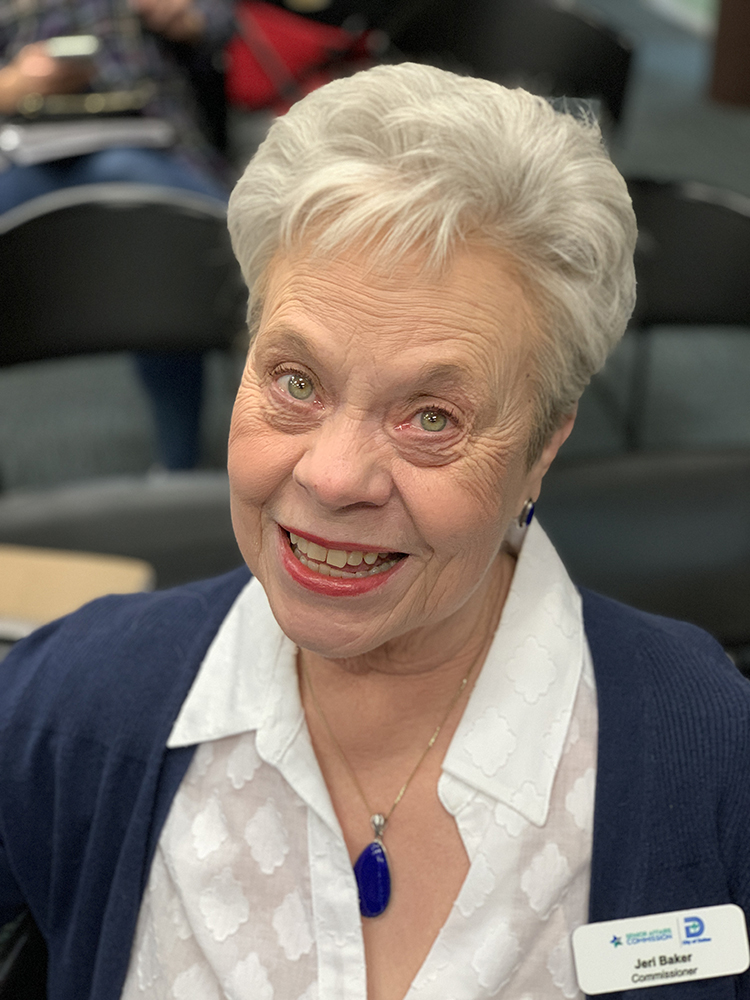 Christie Myers, former Managing Director of Opportunity Dallas, addressed the importance of aging in place to seniors and the community as a whole.
Christie Myers, former Managing Director of Opportunity Dallas, addressed the importance of aging in place to seniors and the community as a whole.
On a weekly basis, I am confronted with conversations involving seniors, gently raising their hands from the back row, saying “don’t forget about us.”
The repetitive hand raising granted me the opportunity to sit down and talk with one senior, Jeri Baker, who advocates relentlessly for her senior citizen community and reminds city stakeholders and leadership why aging in place, or “Living in Place,” is not only important, but vital for the growth and development of neighborhoods for decades to come.
The Importance of Advocacy
“I’m not ready to leave my community and move into senior living. I value the mixed perspectives of my neighborhood. I value the younger families moving in and watching the similarities and differences in how we raise our children. I value the small knocks on the door asking if I need help picking up sticks in my front yard. I value the young mom asking for an extra egg because her recipe calls for two or the moment, she just needs advice from someone who has been where she has been before. The things that seem so little, are invaluable to my emotional, physical and mental health and they are all supported by the neighborhood in which I live.”
Listening to Jeri Baker, a strong advocate for senior citizens “Living in Place”, she outlines the value for both her and her surrounding community to remain in her neighborhood as long as she can. And, in the moment she needs to move to a smaller living space, that it should still be within the neighborhood she has spent four decades investing in.
Jeri was born and raised in Houston, Texas, and went on to complete her undergraduate degree at Southern Methodist University (SMU). She completed course work for her MLS degree from the University of North Texas (UNT). Perhaps most interestingly, given the topic, she has a Certificate in Applied Gerontology which is a program that equips you with the knowledge and skills to pursue a career dealing directly with aging service organizations and research. Jeri then went on to spend 30 years working for the Dallas Public Libraries and becoming that sweet face you would see every time you walk through the double doors.
A Unique Platform
After living in Lake Highlands (Northeast Dallas) for more than 40 years, she was appointed as the Senior Affairs Commissioner, representing the growing number of senior citizens both in her district and across the City. Jeri found herself with a unique platform to voice her growing concerns about the need for seniors to be able to age in their place and the value it brings to the growth of our neighborhoods.
“Research has shown that most older adults prefer to remain living in their own homes or to successfully age in place. Reasons include comfort, financial concerns, independence, proximity to loved ones, convenience, established ties to faith-based organizations and community activities.
Affordable housing is a definite concern. Independent living and long-term care facilities are very expensive. On the other hand, upgrades and renovations to make a house marketable are costly.”
Referencing AARP’s Age Friendly Communities Initiative and the 8 Domains of Livability, Dallas, and other cities across the country, are not short on areas to grow in their service and accountability to seniors. Two of the most pressing needs are for the development of senior centers and thoughtful planning (be it bond funding, economic development dollars or public private partnerships) for the growing number of seniors who are dedicated to aging in place.
Senior centers serve as a gateway connecting older adults to vital community services that assist them in their health and independence. Not only do centers provide access to resources but they serve as a venue for seniors to participate in community and social activities and create new friendships.
State of the Cities Report
As the National League of Cities cites throughout their State of the Cities Report, it is not only necessary, but critical that seniors be considered in every level of planning. Our strategies for decades have been state and federally focused, rather than digging in with our local elected officials. Advising them on the importance of thoughtful planning for every generation is critical.
“The core function of City government is to provide quality of life, basic services, public safety, police and fire; Recreational opportunities for our citizens, young and old; water and sewer; streets and drainage. To be successful it takes on-going, smart planning, 5, 10, 20 year plans that will yield development that creates jobs and be a credit to our city.” – Mayor Andrew “FoFo” Gilich
We must continue to consider seniors in each of these planning strategies to encourage aging in place, from the way parks are designed, to including seniors in the conversation around affordable housing, to ensuring quality health care options, to senior mobility options.
Jeri closed by saying, “I want to be here, and I want to be considered a value add to my entire community.”


